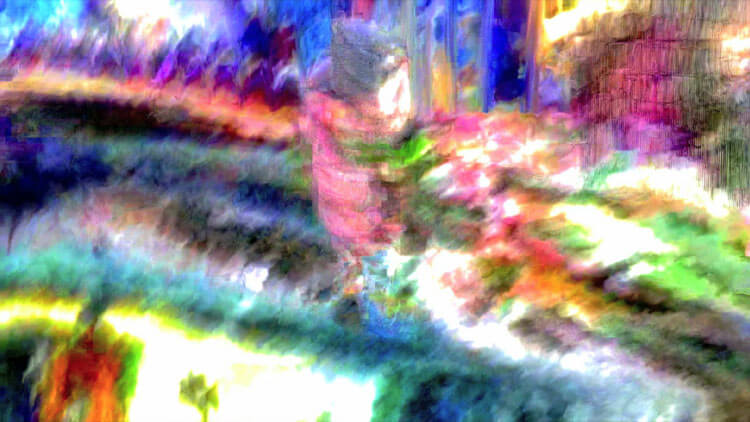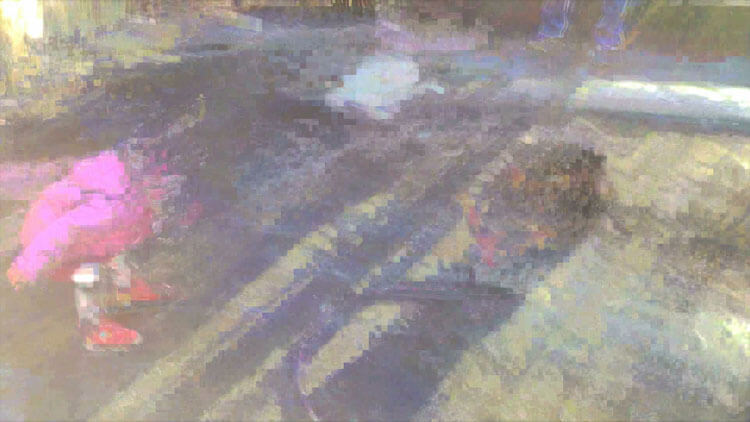Words by Meritxell Rosell
Dr Yuichi Ito is a Japanese sound and media artist, theorist and researcher. CLOT Magazine came across his work through an exciting collaboration project with Dr Yoshimasa Kato, for which they received an honourable mention in the interactive art category in Ars Electrónica, 2007. Neurobiology, cognition, sound vibration and sculpture blended and morphed into performance within close interaction with the audience.
More recently, Yuchi Ito’s interests have shifted to the combination of datamoshing and sound. For fmi:Seq no.2 he developed software in which images on the computer screen are used to generate sound, the computer is transformed into a performance musical instrument, where Datamoshing can be used as a means to obtain new sounds.
Reminiscent of Carsten Nicolai and Ryoji Ikeda’s work, here it is the mutability of images that generates the sound instead of the sound analysis producing dynamic visuals. Ito is also performing research-based work trying to extrapolate datamoshing concepts to human societies incorporating the notion of error deliberately induced transformation.
Mixing image and sound Ito creates perfectly ethereal and eerie atmospheres, like in Don’t flatten. part 2.1 and Don’t flatten. part 5, which lay in that nowhere land between man and machine.
Your work as a sound artist and researcher involves sound, video, performance and new media technology. When and how did the fascination with them come about?
Basically, I have loved music since (maybe) I was born. However, I did not have an opportunity to learn musical grammar and instruments before I enrolled in the university. Moreover, I entered the cognitive science department and studied many interesting, though this was not related to music.
In my second year, I had to select a teacher about whom to write a graduation paper. I looked for what is interested me, and I discovered it in the Media Science department of my university, where also I discovered American composer Carl Stone.
This was decide my way to become an artist and a researcher. Almost all of Carl’s music and live performances were generated by computer. This appeared to kind of magic to me.
Therefore, I knocked on his office door and joined his seminar. This is the story of how I became fascinated with sound and performance using new media technologies.
What are your aims as a sound artist working in between technology and art?
My aim is to show another perspective of technology using sound and image artworks. Often I misuse some electric devices. This creates noise and glitches, as well as we cannot imagine. I believe that this will reveal a new technological perspective and impact.
In White Lives on Speaker, a project in which you collaborated with Yoshimasa Kato, brainwaves were converted into sound and the sound waves translated into a sculptural manifestation. What were the biggest challenges you faced for its development?
I often create programs to generate my work. These computer programs almost always run the same. However, the liquid used in White Lives on Speaker was a very “raw” material. Therefore, the liquid’s condition changed every minute, making it a challenge to control and maintain a good condition. We had to test it hundreds of times in order for this to work.
What directions do you imagine taking your work in?
I focus on the glitches. Among them, I am conducting research on data moshing that was achieved by using an error in a video compression algorithm. This algorithm is highly complex, so I feel it is similar to human society. I believe that data moshing is one possibility for simulating society. Therefore I would like to simulate an error society by data moshing and would like to see what happens to it. I want to confirm what we experience in that simulated society.
What is your chief enemy of creativity?
Business. I often have new ideas well up when creating my own artwork. I need time to create my own pieces. Of course, the busyness for creating artwork is great.
You couldn’t live without…
Sound. Not just music. I love all of the sounds that we can hear in daily life. Of course, sometimes it is noisy. However, I’m happy when I hear a new sound that I never heard before.








